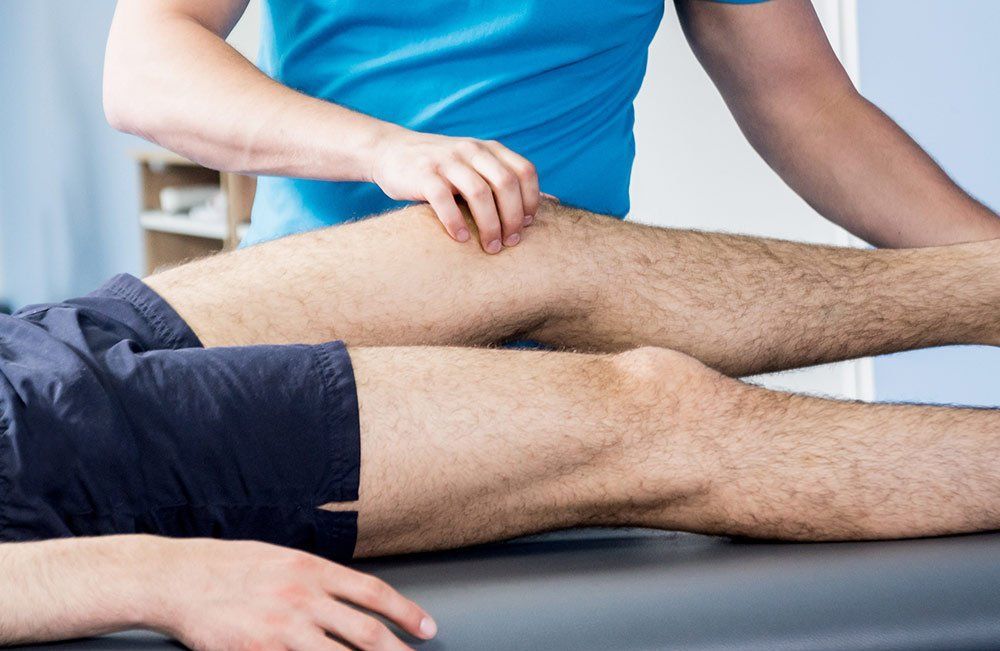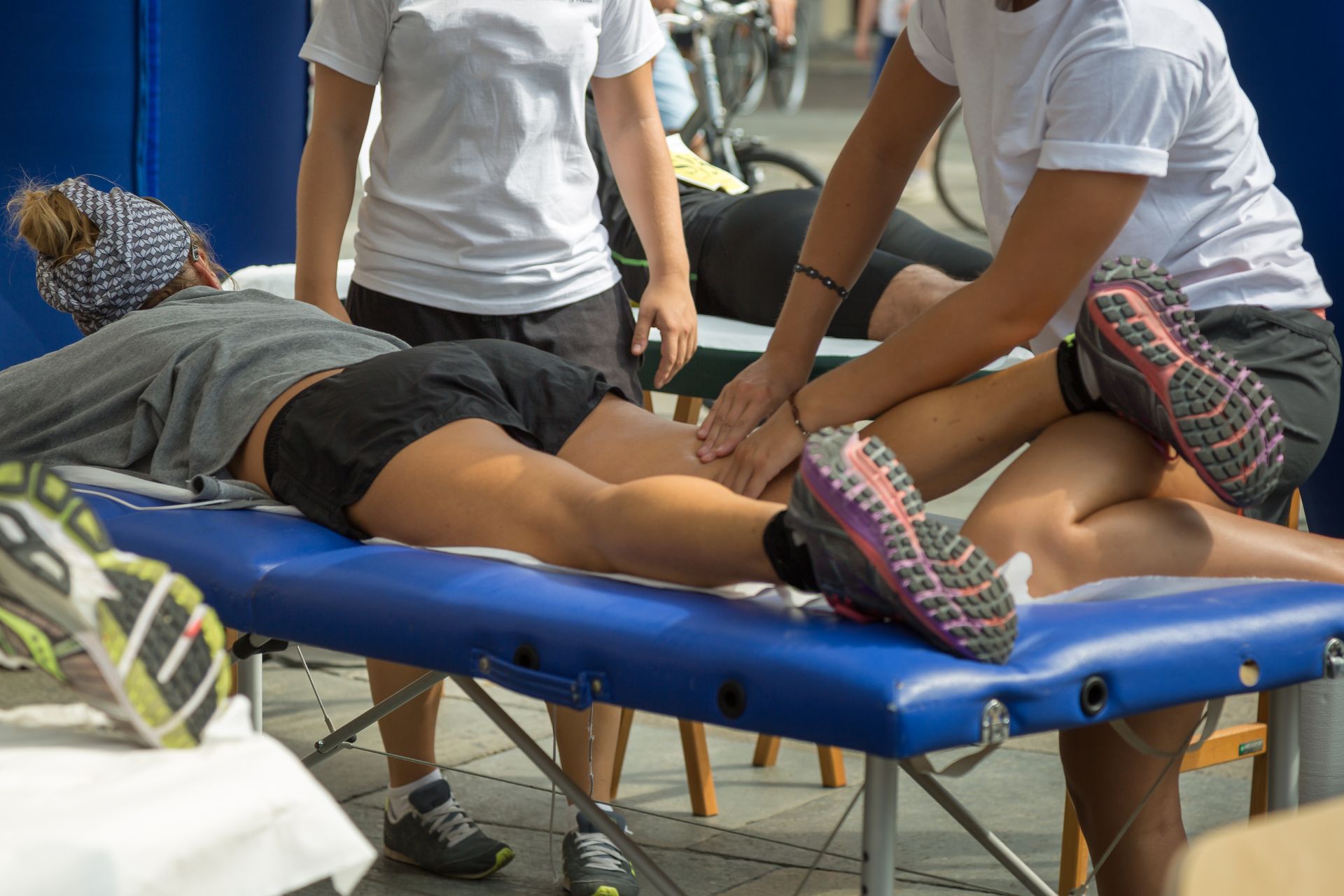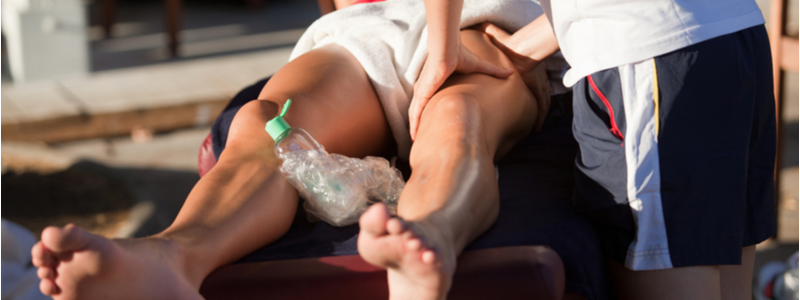May 23, 2024
If you're considering becoming a sports massage therapist then this page will provide you will all the necessary information you need, including what the role entails, which qualifications you'll need and what you can actually do with those qualifications. Sports massage therapists, or 'SMT's' as they're sometimes called, are in demand due to their ability to help relieve aches, pains or muscular tension. Sports massage is a form of soft tissue therapy that involves the manipulation of the body (skin, fascia, muscles, tendons and ligaments) in order to improve recovery, reduce inflammation, reduce the risk of injury, and restore normal tissue function. Dysfunction of soft tissue can be caused by everyday life, sport and recreational-related activity. Combining a sports massage course with other fitness qualifications enables you to expand your knowledge and skills in the recovery, treatment and rehabilitation process whilst increasing your earning potential. The Role of a Sports Massage Therapist (SMT) The role of an SMT is varied so will largely depend on where you are working, your qualifications, client base, and what specialist skills you possess. Generally speaking, you will be working with clients to either help them alleviate symptoms such as aches, pain, inflammation, and tension, or as part of a maintenance approach to preventing these from occurring in the first place. You'll treat people of all ages and backgrounds using a variety of techniques. These may not always involve much massage, however, an ability to be flexible and adaptive to the individual needs and goals of clients is a must. Although sports massage is most often associated with rehabilitation, it also focuses just as equally on injury prevention and performance strategies. In this context, sports massage is used to maintain optimum tissue function and this approach is often referred to as 'prehab' or 'prehabilitation' - improving range of motion, efficiency, and function before injury. In addition to treating the physical effects of soft tissue dysfunction, it is also highly likely you'll find yourself dealing with a client emotional state too. Pain or injury can affect a persons mood. Clients you work with may already be suffering from low self-esteem, confidence issues, anxiety or depression, therefore, being able to provide a person-centred level of care and support is essential. Sports massage therapists use a variety of techniques, including pressure and friction so the body can start the natural healing process. Sports Massage Training and Qualifications SMT's can complete their qualification with a training provider like TheraGym, or in an academic setting like a university. The academic route is completed in the context of a degree and over 3-4 years. These qualifications will normally place greater emphasis on advanced anatomy, various treatment modalities, rehabilitation, biomechanics, physiology, pathology, and research methods. Degree-level therapy-related qualifications are typically aimed at those wanting to work in a clinical setting and elite sports, and as such, will have a much larger scope and title (e.g. physiotherapy, sports therapy). Outside of a physiotherapy or sports therapy degree, the three most widely recognised sports massage qualifications are: Level 3 Diploma in Sports Massage Therapy Level 3 Diploma in Performance Massage Level 4 Certificate in Sports Massage Therapy The Level 3 Diploma in Sports Massage Therapy, recently superseded by the Level 3 Diploma in Performance Massage, is the entry-level qualification to qualify as a sports massage therapist. This level 3 programme covers a range of mandatory units relating to sports massage/soft tissue therapy including: anatomy and physiology, lifestyle management and health awareness, professional practice, principles of soft tissue dysfunction, assessing clients and treatment planning, applying sports massage, and providing post-treatment care/advice. The Level 4 Certificate in Sports Massage Therapy is a progression from the Level 3 qualification, and as such, is a requirement on entry that students already hold the Level 3 Diploma. The Level 4 programme covers a broader and deeper level of advanced content including: advanced sports massage therapy techniques, common injuries and treatment modalities, clinical assessment techniques, biomechanical and postural dysfunction and special tests for musculoskeletal injury. It is important to note that after completing these qualifications, students are only qualified to work with those that have already had their injury or condition diagnosed by a physiotherapist. It is considered beyond the scope and professional practice of an SMT to attempt or to diagnose any injury or condition themselves. Sports Massage Opportunities Long gone are the days where sports massage was a treatment reserved for athletes and the physically active. The appeal for sports massage reaches far beyond the exercise, fitness or sporting sectors. Those with sedentary roles or occupations involving repetitive movements (e.g. office workers, delivery drivers etc) can hugely benefit from sports massage. Some of the common places where therapists are able to secure work (on a self-employed or employed basis) include: Gyms & Health clubs Sports clubs Physiotherapy clinics Sporting events Client's home Pay and Expected Earnings SMT's can typically expect to earn between £18,000-£26,000 per annum depending on the number of hours they work, client-base, level of qualification, and location. It is important to note that is usually takes a little time to build your client-base to earn this salary range whilst you're establishing your business and clients. Most SMT's start with an initial appointment of 45-60 minutes, and future appointments lasting between 30-45 minutes and will charge £25-£50 per session, however, this is subject to the factors outlined above and personal preference. For more information, or to speak to us about enrolling onto one of our courses, contact us on 0121 517 1730 or email info@theragym.co.uk .









